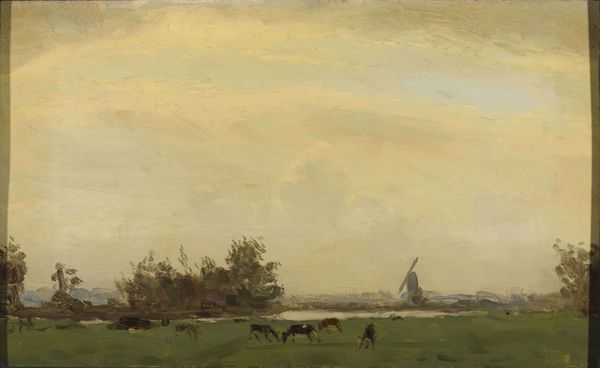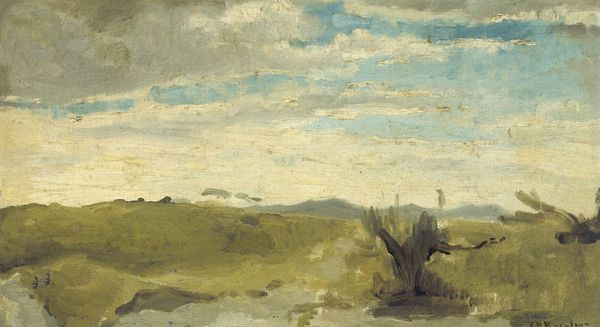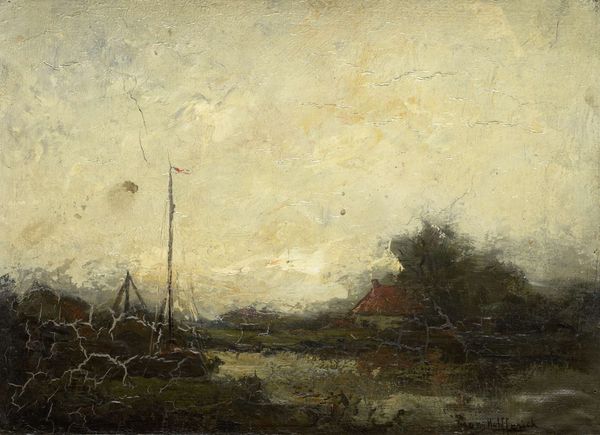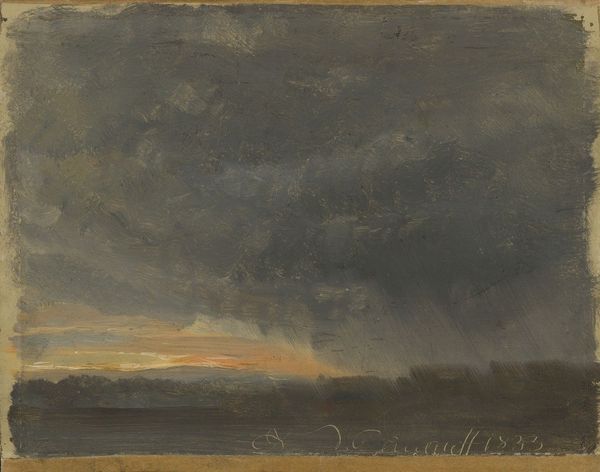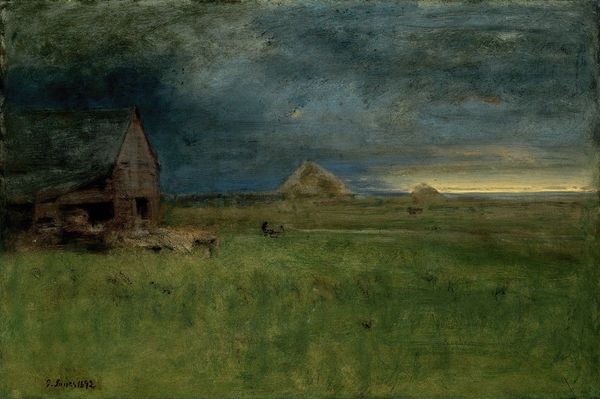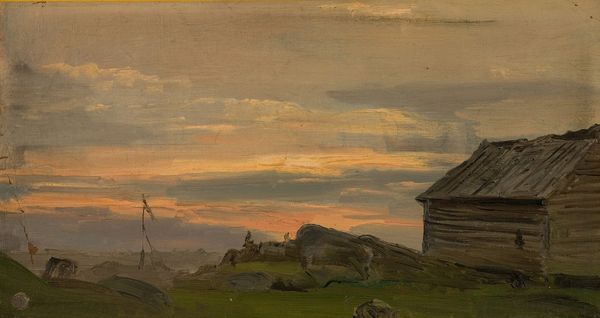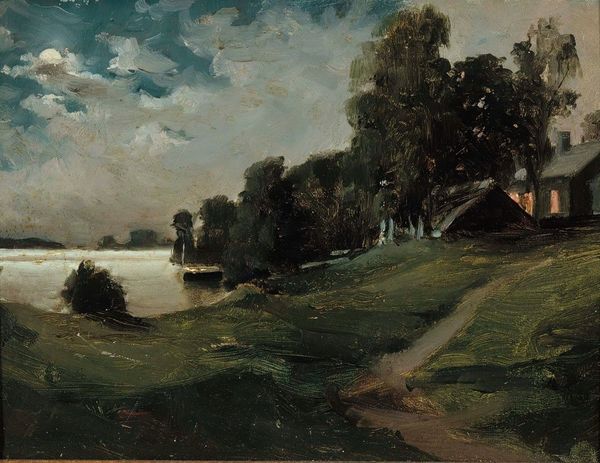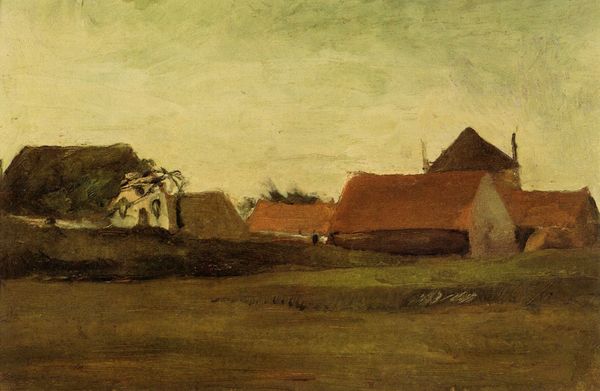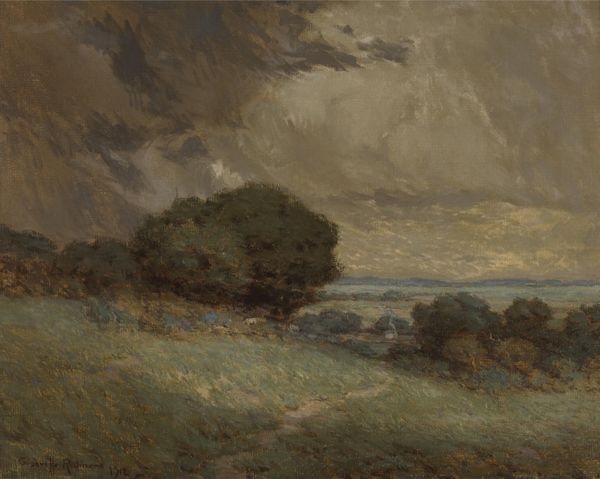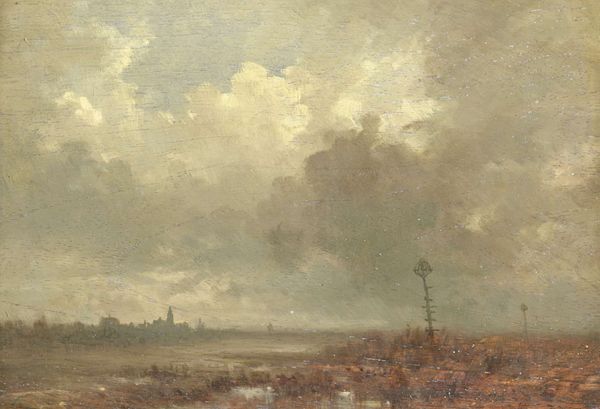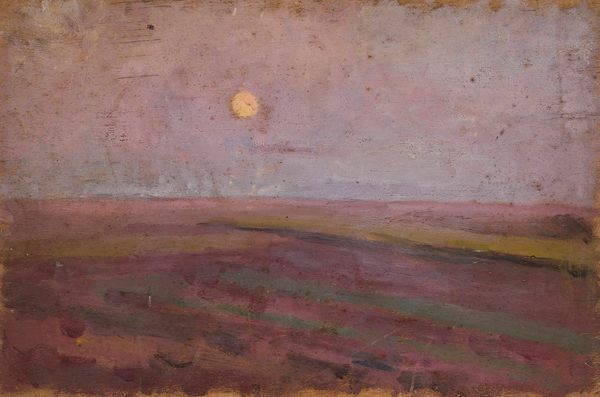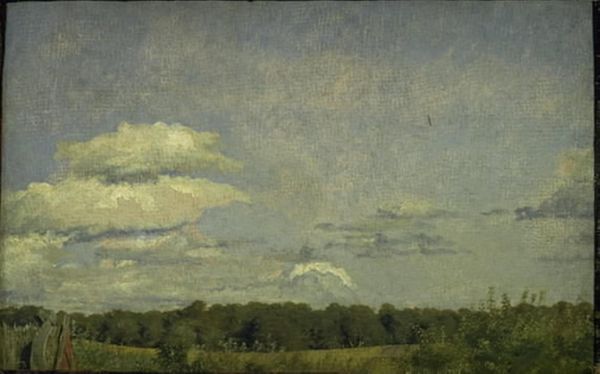
Dimensions: height 14 cm, width 23.5 cm, depth 8.8 cm
Copyright: Rijks Museum: Open Domain
Curator: Looking at "Landschap met de molen van Wijk bij Duurstede," painted between 1885 and 1923 by Willem Witsen, now residing here at the Rijksmuseum... It feels instantly calming. A little melancholic, perhaps. What do you think? Editor: It's the textured application of the oil paint that first grabs my attention, particularly in the sky. The clouds possess this heavy, almost tactile quality. I want to know about the precise pigments he was using, the brushstrokes, the physical act of layering color. Curator: Consider the symbolic weight of the windmill in Dutch art—a marker of national identity, a testament to ingenuity and harnessing natural power. It carries echoes of industry, land reclamation, and a unique relationship with the environment, an almost romantic ideal now. Editor: I see your point about romantic ideals. Yet the earthiness, the almost muted palette…they emphasize the working aspects of the land. The mill isn’t just symbolic; it's a piece of technology deeply embedded in the socioeconomic structure of the Netherlands at the time. Think about who benefited from it? Who did the work to maintain it? Curator: I suppose what I find striking is the painterly style bordering on impressionism; the lack of sharp detail that draws the viewer in closer. What's elided seems just as important as what’s shown here; we fill in the blanks, invest it with our personal histories. Editor: The composition seems strategic. That lower horizon line draws you right into the clouds, and the almost-smudged appearance seems very deliberate. I wonder what he thought about mass-produced pigments versus those he might have mixed himself. What conversations was he having in the studio regarding his chosen tools and material? Curator: A key consideration when thinking about art from this period is always its legacy, what continuities do we recognize today? As a piece representing the Dutch landscape and nation building, the artist has made lasting symbolic implications within its delicate landscape. Editor: The focus on brushwork really highlights the artist's hand and labor, an approach often devalued compared to the end 'product' in older canons of art. This view is so much more democratic. A lovely work. Curator: I've found my perspective enriched. Thank you for drawing me away from the grand narrative, inviting me to look closer, and consider its layered cultural weight.
Comments
No comments
Be the first to comment and join the conversation on the ultimate creative platform.
